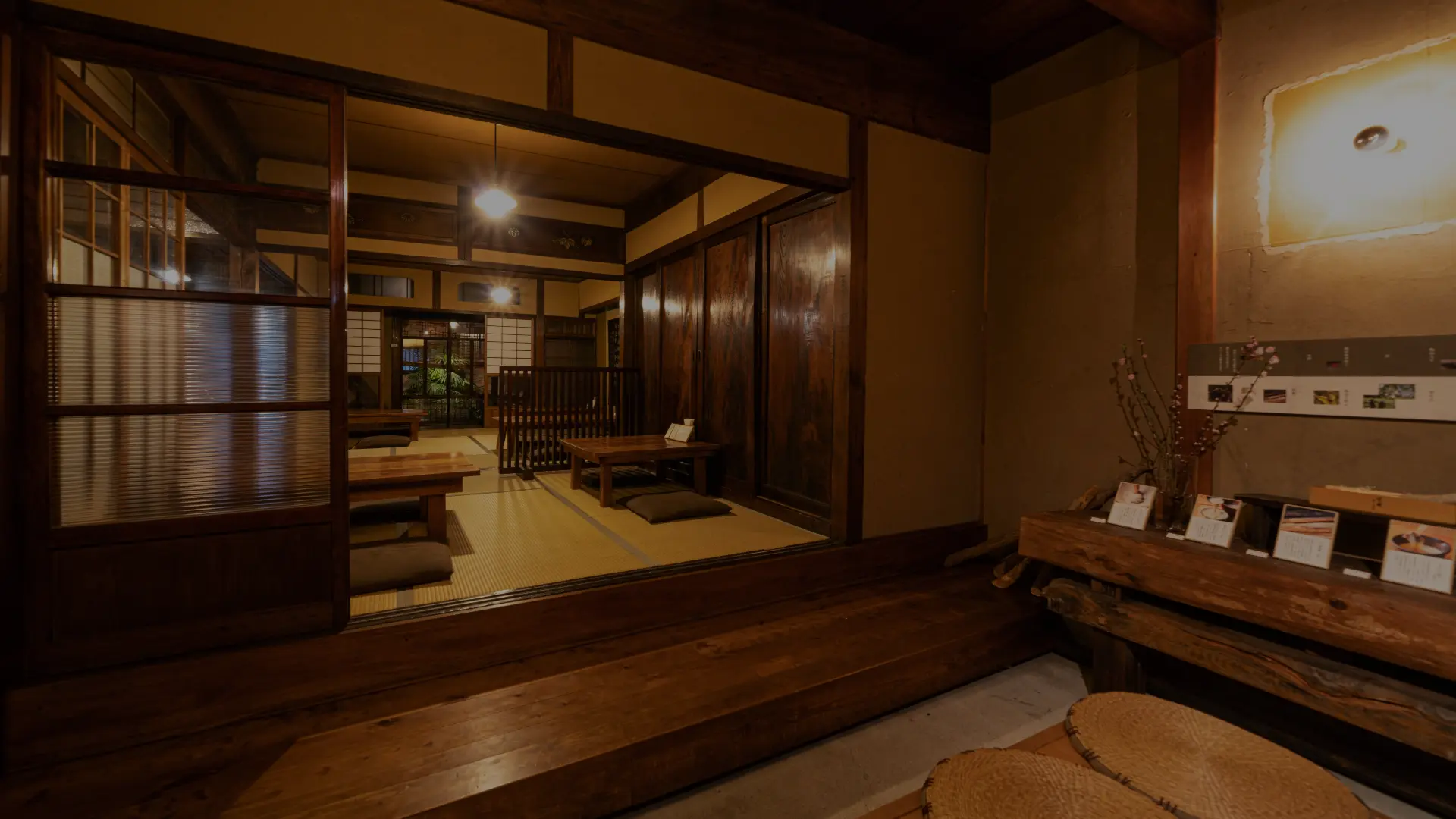
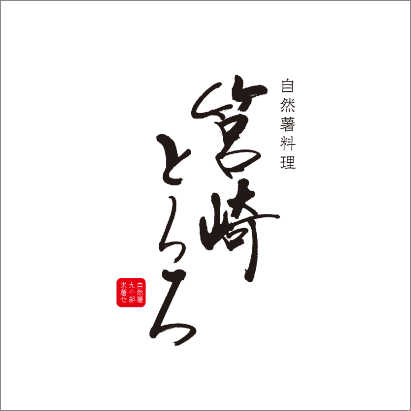

その昔から九州の玄関口であり、今日では近代的なオフィスビルが立ち並ぶ博多ですが、一歩路地に入ると至る所にこの町の古い歴史を物語る建造物や遺構が目に留まります。
通りの景色は様変わりしましたが、筥崎とろろ本店もそんな景観の旧街道沿いに佇む築100年越える大正町家です。その町家に刻まれた歴史と空間を継承していく為、当時の面影を残しながら修繕するのは容易ではありませんが、受け継がれてきたものを活かし、未来へと永らえていくことも「筥崎とろろ」のひとつの大切な使命であると考えています。
この町に、家屋に、道具に、食に、映じる歴史と文化を是非、五感で味わってみてください。
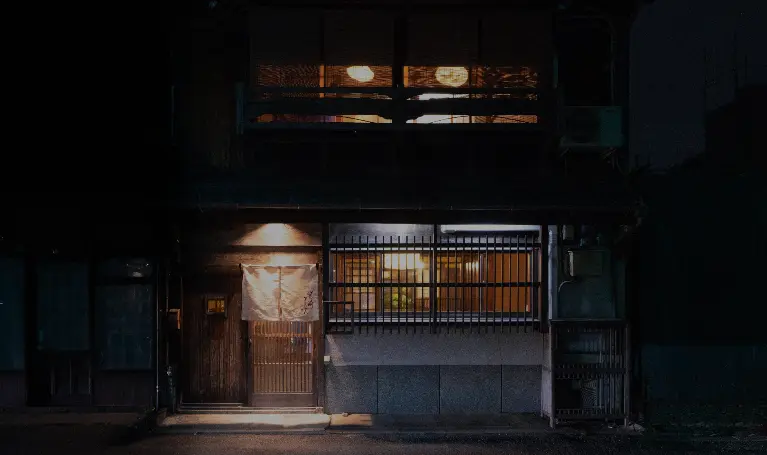
宿場町として栄えた町家
戦国時代の戦火による荒廃から、豊臣秀吉のもと行われた太閤町割りによって復興を遂げた博多の町。
江戸時代にかけて、旧唐津街道の宿場町・筥崎宿界隈は、筥崎宮の門前町と社家町、街道筋の商人町、海側の漁師町、馬出の曲げ物職人町と、町ごとの特色豊かに繫栄してきました。
現在も、江戸、明治、大正、昭和と移り行く各時代の面影や特徴を色濃く残した博多町家約70軒が点在しています。
The city of Hakata was restored after being devastated by fires during the Sengoku period, thanks to the Taikomachi division carried out under Toyotomi Hideyoshi. Throughout the Edo period, the area around Hakozaki-juku, a post town on the old Karatsu Kaido road, prospered with each town’s unique character, including the temple town of Hakozaki Shrine and its shrine family, the merchant town along the road, the fishing town by the sea, and the bentwood craftsmen’s town of Umade. Even today, around 70 Hakata machiya townhouses are dotted around the area, retaining strong traces and characteristics of each era, from Edo, Meiji, Taisho, and Showa.
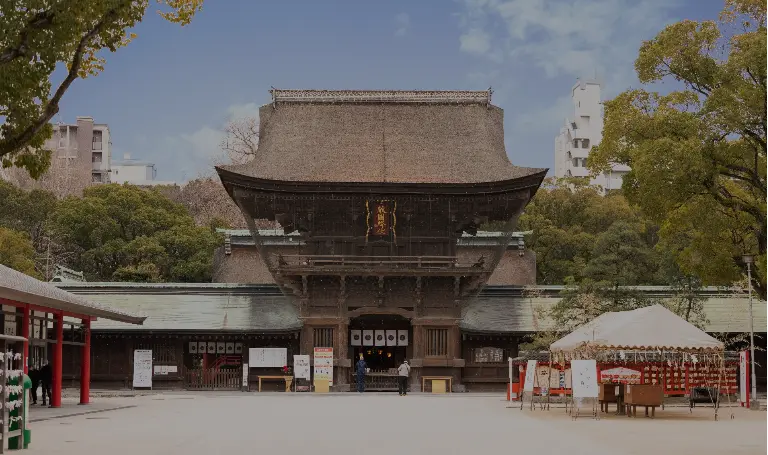
宇佐、石清水両宮とともに日本三大八幡宮に数えられる筥崎宮。創建については諸説ありますが、平安時代の中頃、醍醐天皇が神勅により「敵国降伏」の宸筆を下賜され、御社殿を建立したことが起源ともいわれています。
また、蒙古襲来の折には、「神風」によって元軍を退けた逸話から厄除・勝運の神として有名です。人々に親しまれている玉取祭や放生会大祭など、一年を通して多くの祭りや伝統行事で賑わい、神苑には四季折々の花々が彩りを添えています。
Hakozaki Shrine is one of Japan’s three major Hachiman Shrines, along with Usa Shrine and Iwashimizu Shrine. There are various theories about its founding, but one theory is that it dates back to the mid-Heian period, when Emperor Daigo received a divine decree calling for the "enemy nations to surrender," after which the shrine was constructed. The shrine is also famous as a god of protection from evil and good fortune, due to the anecdote that it used a "divine wind" to repel the Mongol invasion. The shrine is bustling with many festivals and traditional events throughout the year, such as the beloved Tamatori Festival and Hojoe Festival, and the shrine gardens are decorated with flowers that change with the seasons.
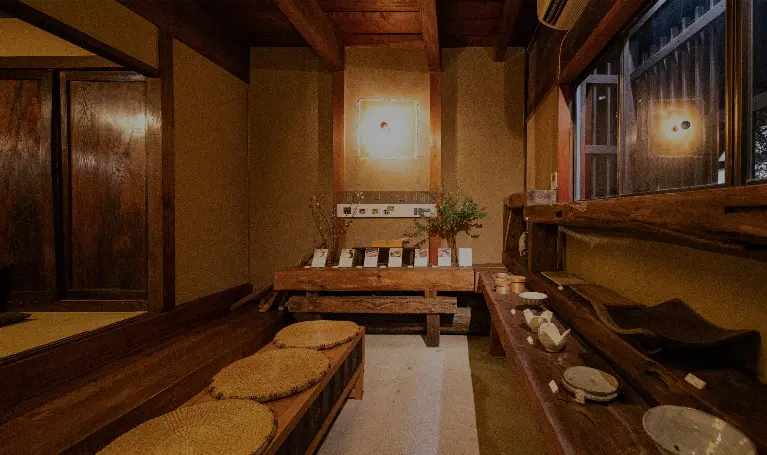
百余年の歴史を持つ本店
筥崎宮の神事に奉納する杉板曲げ物職人町として栄えた馬出地区。その一角に佇む筥崎とろろ本店である旧柴田家住宅は、町家景観を保存し、国土の歴史的景観に寄与するとして、2023年3月、国登録有形文化財に認定されました。
大正初期1915年ごろ、筥崎宮の門前を南北にはしる旧唐津街道沿いに建てられ、「表の間」「中の間」「座敷」の3部屋が一列に並ぶ町家特有の間取りを有しています。
The Umade area flourished as a town of craftsmen making cedar planks to be dedicated to the religious ceremonies of Hakozaki Shrine. The former Shibata family residence, which is the main store of Hakozaki Tororo and stands in one corner of the area, was designated a National Registered Tangible Cultural Property in March 2023 for preserving the townhouse landscape and contributing to the historical landscape of the country. Built around 1915, in the early Taisho period, along the old Karatsu Kaido road that runs north and south in front of Hakozaki Shrine, it has a typical townhouse layout with three rooms, the "Omote-no-ma," "Naka-no-ma," and "Zashiki," lined up in a row.

ユネスコの無形文化遺産として登録されたことからも、国内外から注目を集める「和食」。和食には、日本らしい自然な食材と受け継がれた伝統技術が必要だと考えます。
当店では、自社農園で育てた自然薯をはじめ、生産方法にこだわりぬいた篤農家さんが育てる四季の野菜やキノコ、愛情こめて肥育した九州産の豚や牛、狩猟で仕留めたイノシシを使用。伝統的な製法の本枯れ節でだしを取り、調味料には日本の発酵文化を支える本醸造の醤油や味噌、味醂を使っています。
そこにぬくもりを添えるのが小石原焼の窯元・辰巳窯の器です。火打石でおこし、登り窯で焼く素朴な器には、確かな職人の技と誇り高い精神が輝いています。
Japanese cuisine has been attracting attention from both within Japan and overseas, having been registered as an intangible cultural heritage by UNESCO. We believe that Japanese cuisine requires natural ingredients and traditional techniques that are uniquely Japanese.
Our restaurant uses wild yams grown in our own farms, seasonal vegetables and mushrooms grown by dedicated farmers who are particular about production methods, pork and beef from Kyushu that have been fattened with love, and wild boars that we hunt. We make our stock using traditional honkarebushi (dried dried bonito flakes), and for seasonings we use honjozo soy sauce, miso, and mirin that support Japan's fermentation culture.
Adding warmth to the dish is the pottery from Tatsumi Kiln, a Koishiwara ware manufacturer. The rustic pottery, which is made with flint and fired in a climbing kiln, shines with the skilled craftsmanship and proud spirit of our artisans.
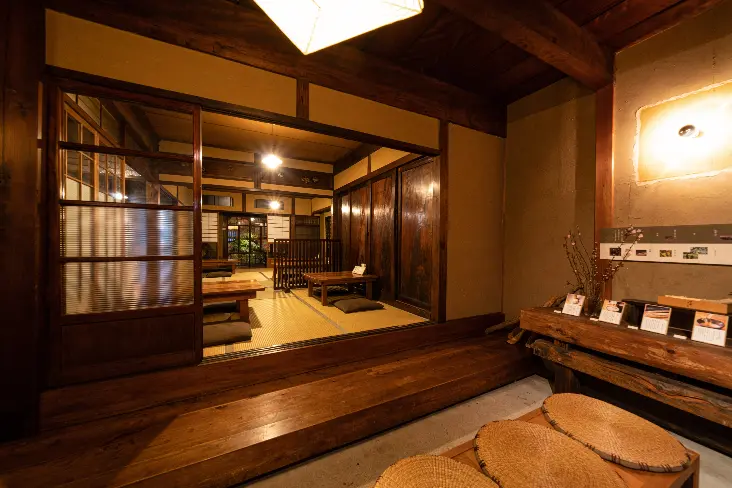




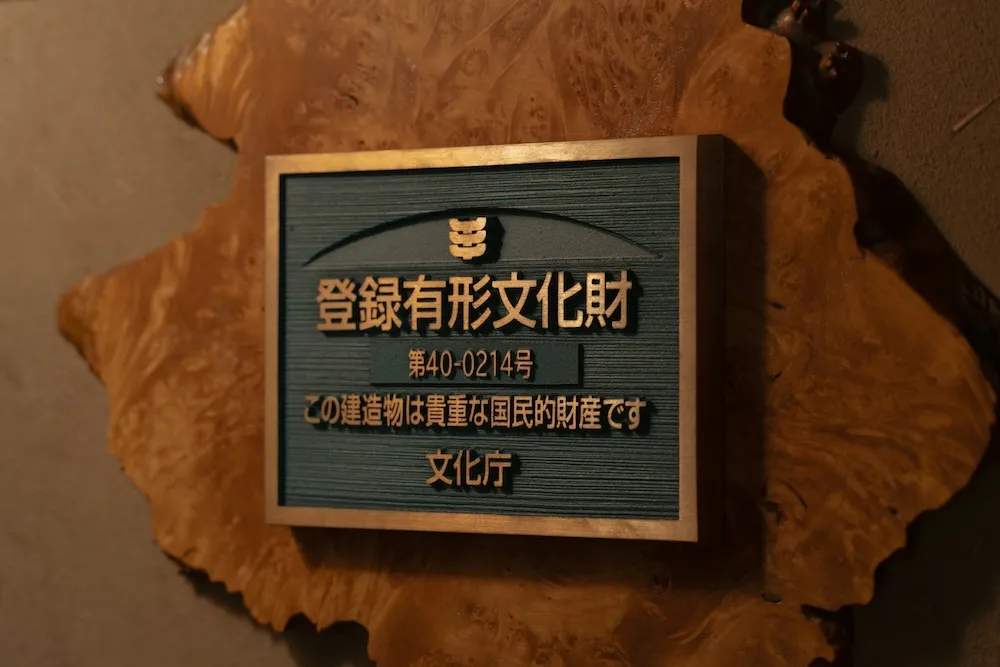

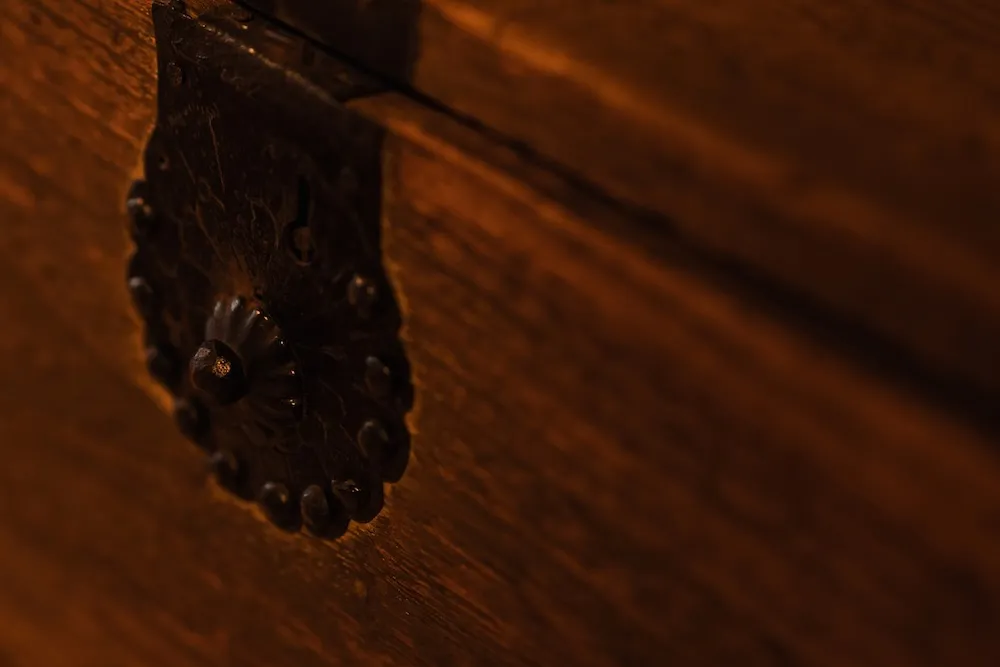
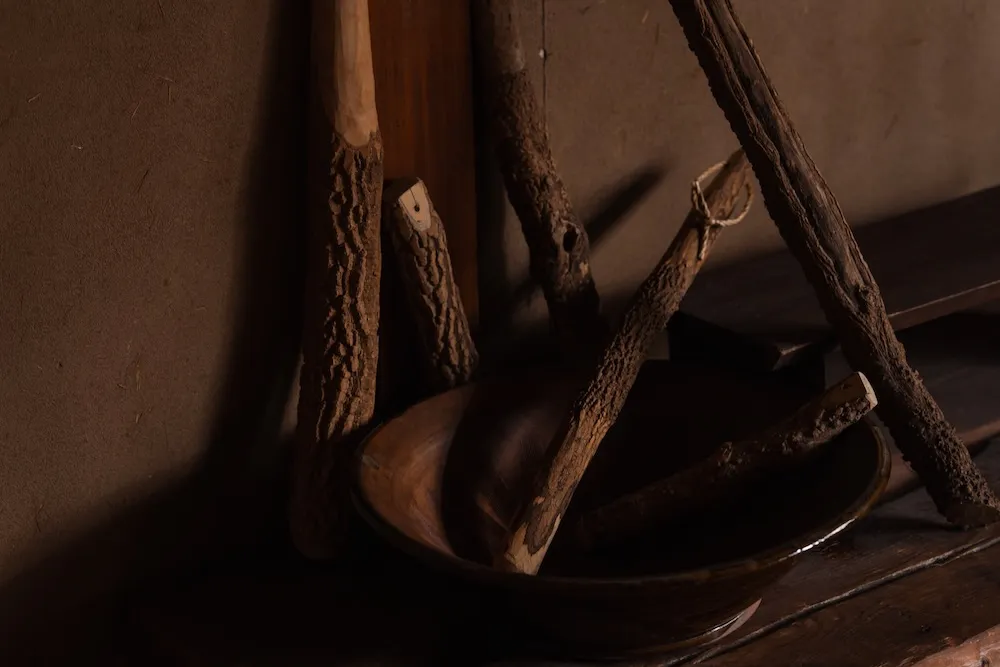

operating a bentwood business
was remodeled into a living space
kitchen building, opening of
Hakozaki Tororo main store
tangible cultural property